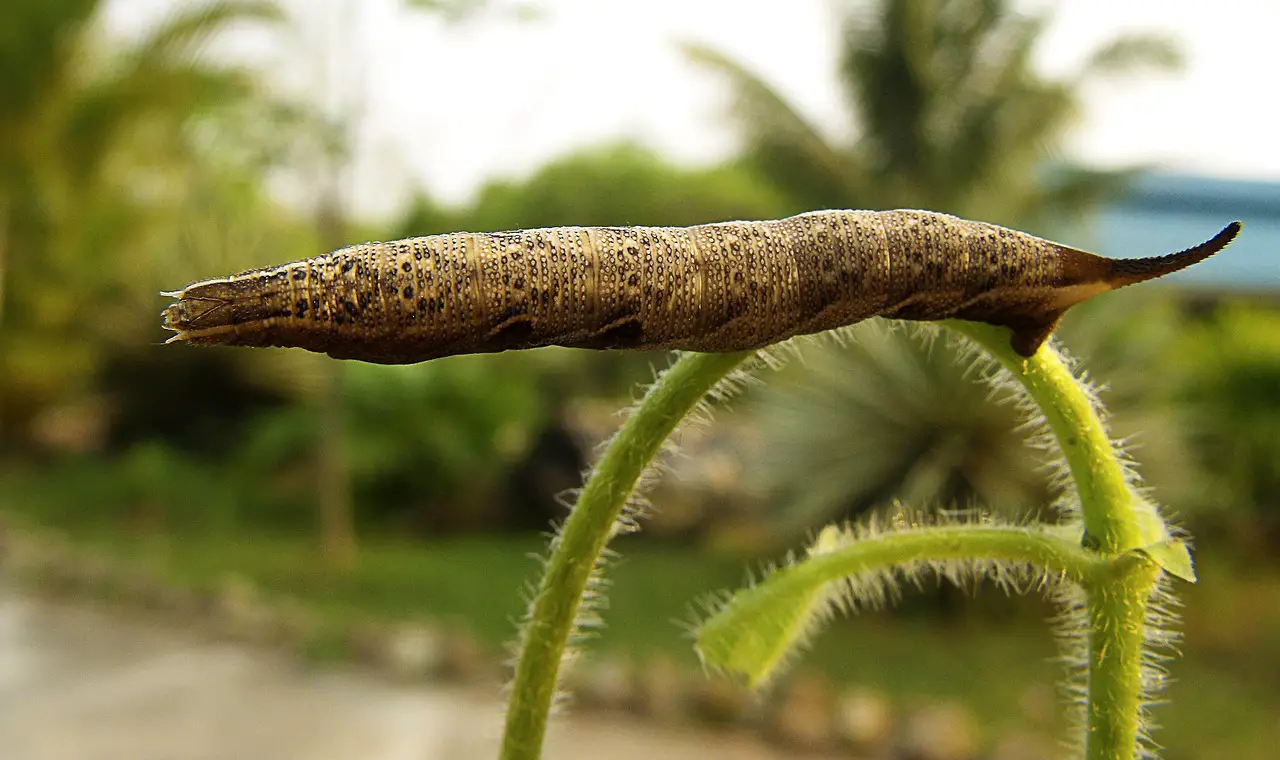To build a beetle bank and attract beneficial insects, create a raised mound with diverse vegetation. Use a mix of soil, sand, and organic matter to ensure drainage. Plant native flowers, grasses, and shrubs to encourage beetles and other beneficial wildlife.
Understanding Beetle Banks

Beetle banks are a crucial element in sustainable gardening and farming. They serve as habitats for beneficial insects, particularly predatory beetles that help control pest populations. These structures not only enhance biodiversity but also contribute to healthier ecosystems. By attracting these beneficial insects, gardeners and farmers can reduce their reliance on chemical pesticides.
The concept of beetle banks originates from agricultural practices aimed at promoting natural pest control. By providing a safe environment for predatory insects, beetle banks create a natural balance, allowing crops to thrive without the need for harmful interventions. This method is increasingly recognized for its ecological benefits and effectiveness in pest management.
Why Attract Beneficial Insects?
Beneficial insects play an essential role in maintaining a balanced ecosystem. They contribute to various ecological services, including:
- Pest Control: Predatory insects like ladybugs, lacewings, and certain beetles feed on harmful pests, reducing their populations naturally.
- Pollination: Many beneficial insects also act as pollinators, aiding in the reproduction of flowering plants.
- Soil Health: Some beneficial insects help aerate the soil and contribute to nutrient cycling, enhancing soil fertility.
Components of a Beetle Bank
Creating an effective beetle bank involves several key components. It is important to consider the following elements:
- Location: Choose a sunny spot that is sheltered from strong winds and has well-drained soil.
- Soil Composition: A mixture of soil, sand, and organic matter is ideal for drainage and nutrient retention.
- Diverse Planting: Include a variety of native plants that bloom at different times throughout the growing season to provide food sources for insects.
Plant Selection
Selecting the right plants is crucial for attracting beneficial insects. Native plants are particularly effective, as they are adapted to local conditions and provide the necessary resources for local wildlife. Here are some recommended plants:
| Plant Name | Benefits |
|---|---|
| Yarrow | Attracts predatory insects and provides nectar. |
| Goldenrod | Offers late-season blooms for pollinators. |
| Aster | Provides nectar and pollen in the fall. |
Incorporating these plants into your beetle bank will create an inviting habitat for beneficial insects. The combination of food sources and shelter will ensure that these helpful creatures thrive in your garden or farm.
In addition to plant selection, consider the design of your beetle bank. A raised mound can enhance drainage and provide a distinct microhabitat, making it more attractive to beneficial insects. Aim for a height of around 30 to 50 centimeters to optimize growth conditions and visibility.
By taking these steps to build a beetle bank, you can foster a more biodiverse garden that supports healthy insect populations. This approach not only benefits your plants but also contributes to the overall health of the environment.
Maintaining Your Beetle Bank
After establishing your beetle bank, ongoing maintenance is essential to ensure that it remains a thriving habitat for beneficial insects. Regular care not only promotes healthy plant growth but also helps maintain the ecological balance within your garden. Here are some key maintenance practices to consider:
Weeding and Mulching
Weeds can compete with your selected plants for nutrients and water. Regular weeding is crucial for maintaining the health of your beetle bank. Here are some tips:
- Manual Weeding: Hand-pull weeds, especially in the early stages of growth, to minimize disruption to the soil.
- Mulching: Apply a layer of organic mulch around your plants. This helps suppress weed growth, retain moisture, and improve soil quality.
Watering Practices
Watering is essential, particularly during dry spells. However, overwatering can lead to root rot and other issues. Here are some watering strategies:
- Deep Watering: Water deeply but less frequently to encourage deep root growth.
- Soil Monitoring: Check soil moisture levels before watering. The top inch of soil should be dry before adding more water.
Enhancing Biodiversity
A beetle bank can be further enhanced by incorporating additional features that promote biodiversity. Consider adding elements that attract various beneficial insects and wildlife.
Insect Hotels
Insect hotels provide nesting sites for solitary bees and other beneficial insects. These can be easily constructed using materials such as:
- Bamboo Sticks: Cut bamboo into sections to create hollow tubes.
- Wood Blocks: Drill holes of varying sizes into untreated wood blocks to accommodate different species.
- Pine Cones: Use pine cones as natural nesting materials for certain insects.
Water Sources
Providing a small water source can attract beneficial insects. Here are some ideas:
- Shallow Dishes: Use shallow dishes filled with water and add stones for insects to perch on without drowning.
- Puddling Stations: Create small puddles of water in sunny areas to attract butterflies and other insects.
Monitoring Insect Activity
Keeping track of the beneficial insects in your beetle bank can help you understand its effectiveness. Monitoring insect activity allows you to make necessary adjustments and improvements. Here are some methods to consider:
- Visual Observation: Spend time observing the different insects visiting your beetle bank. Take notes on their numbers and types.
- Photography: Capture photos of the insects you encounter for identification and tracking purposes.
- Insect Traps: Set up simple traps, such as sticky traps, to monitor population levels without harming the insects.
Identifying Beneficial Insects
Understanding which insects are beneficial can help you appreciate the diversity in your beetle bank. Some common beneficial insects to look for include:
- Lacewings: Their larvae feed on aphids and other soft-bodied pests.
- Ladybugs: Known for consuming large quantities of aphids throughout their lifecycle.
- Ground Beetles: These predators help control pest populations by preying on various insects in the soil.
Encouraging a variety of beneficial insects will enhance the effectiveness of your beetle bank, creating a sustainable environment for both plants and wildlife. By integrating these maintenance practices and enhancements, you will ensure that your beetle bank remains a vibrant ecosystem that supports beneficial insect populations for years to come.

Challenges in Building a Beetle Bank

While establishing a beetle bank is highly beneficial, it can come with challenges that require careful planning and management. Understanding these potential issues can help you mitigate them effectively. Here are some common challenges you might face:
Soil Quality Issues
The success of your beetle bank largely depends on the quality of the soil. Poor soil conditions can lead to stunted plant growth, which in turn affects the insect populations. Here are some factors to consider:
- Soil Composition: Ensure your soil has a balanced mix of sand, silt, and clay to promote healthy drainage and nutrient retention.
- pH Levels: Conduct a soil test to check the pH levels. Most plants prefer a neutral to slightly acidic pH (6.0 to 7.0).
- Nutrient Deficiency: Regularly amend the soil with organic matter such as compost to provide essential nutrients for plant health.
Pest Management
Encouraging beneficial insects is a natural way to manage pests, but it is important to keep an eye on pest populations. Some strategies for managing pests include:
- Natural Predators: Introduce additional beneficial insects that prey on common garden pests, such as parasitic wasps or predatory mites.
- Companion Planting: Use companion plants that repel pests or attract beneficial insects. For example, planting marigolds can deter nematodes.
- Physical Barriers: Use row covers or netting to physically prevent pests from reaching your plants while still allowing beneficial insects access.
Seasonal Considerations
Different seasons bring unique challenges and opportunities for your beetle bank. Understanding these seasonal changes can help you adapt your management practices accordingly.
Spring Preparations
In spring, as plants begin to grow, it’s essential to prepare your beetle bank for the active season ahead. Key activities include:
- Clearing Debris: Remove any dead plant material from the previous season to prevent disease and pests.
- Planting New Species: Introduce new plants that bloom early in the season to provide food sources for emerging insects.
- Monitoring Soil Moisture: Ensure adequate moisture levels as plants begin to grow, particularly in drier areas.
Summer Maintenance
Summer is typically the most active season for both plants and insects. To support their growth, consider the following:
- Irrigation Focus: Increase watering frequency during hot spells, ensuring that plants receive enough moisture.
- Pest Monitoring: Keep a close watch on pest populations and take action if necessary. Early intervention can prevent infestations.
- Encouraging Pollination: Create habitats for pollinators by adding flowering plants that bloom throughout the summer.
Fall Preparation
As the growing season comes to an end, fall offers an opportunity to prepare your beetle bank for winter. Important tasks include:
- Harvesting Seeds: Collect seeds from your plants to replant next season and promote genetic diversity.
- Mulching: Apply a layer of mulch around your plants to protect the soil and provide insulation during colder months.
- Insect Habitat Maintenance: Ensure that insect hotels and other habitats are clean and ready for use by overwintering insects.
Educating Others About Beetle Banks

A beetle bank not only benefits your garden but also serves as an educational resource for your community. Sharing knowledge about the importance of beneficial insects can inspire others. Here are some ways to educate others:
- Workshops: Host workshops in your community to teach others how to create their own beetle banks and promote biodiversity.
- Garden Tours: Invite neighbors or local schools to tour your garden and see firsthand how a beetle bank operates.
- Online Resources: Share articles, videos, or social media posts about the benefits of beetle banks and how to maintain them.
By engaging with your community, you can foster a greater understanding of sustainable gardening practices and the vital role of beneficial insects in our ecosystems.
Incorporating Beetle Banks into Broader Ecosystem Practices
Building a beetle bank is just one aspect of fostering a healthy ecosystem in your garden or farm. To maximize the benefits of your beetle bank, consider integrating it with other ecological practices. Here are some strategies to create a more holistic approach:
Companion Planting
Companion planting involves growing different plants together to enhance growth, repel pests, and attract beneficial insects. This practice complements the establishment of a beetle bank by:
- Enhancing Biodiversity: Planting a variety of species can improve resilience against pests and diseases.
- Attracting Pollinators: Including flowering plants alongside your vegetables can draw in bees and butterflies, which are crucial for pollination.
- Providing Shelter: Companion plants can also offer additional hiding spots for beneficial insects.
Integrating with Organic Gardening Practices
Adopting organic gardening methods goes hand-in-hand with maintaining a beetle bank. Organic practices help support the health of the soil and plants, creating a sustainable environment for beneficial insects. Key practices include:
- Avoiding Chemical Pesticides: Use natural pest control methods to protect beneficial insects while managing harmful pests.
- Using Organic Fertilizers: Fertilize with compost or organic products to enrich the soil without harming the ecosystem.
- Promoting Soil Health: Practice crop rotation and cover cropping to maintain soil fertility and structure.
Creating Wildlife Corridors
Establishing wildlife corridors can enhance the effectiveness of your beetle bank by providing pathways for beneficial insects and other wildlife. Consider these elements when designing corridors:
- Connecting Habitats: Create links between your beetle bank and other natural areas, such as wooded lots or hedgerows, to allow insects to move freely.
- Diverse Plantings: Use native plants along the corridors to attract various insect species and provide additional food sources.
- Water Sources: Incorporate small water features or ponds to support wildlife and beneficial insects.
Final Thoughts
Building a beetle bank is an effective way to promote beneficial insects in your garden or farm, leading to healthier plants and reduced pest populations. By focusing on proper design, maintenance, and integration with other ecological practices, you can create a thriving ecosystem that supports biodiversity.
The benefits of establishing a beetle bank extend beyond individual gardens. They contribute to broader environmental goals by enhancing biodiversity, supporting pollinator populations, and reducing the need for chemical pesticides. As you engage with your community through workshops and educational initiatives, you can inspire others to adopt similar practices, fostering a culture of sustainability.
In summary, the journey to building a successful beetle bank involves not only the physical creation of the habitat but also an understanding of the ecological principles that support it. With thoughtful planning, continuous maintenance, and community engagement, you can play a vital role in nurturing a healthier environment for both your plants and the beneficial insects that help them thrive.
